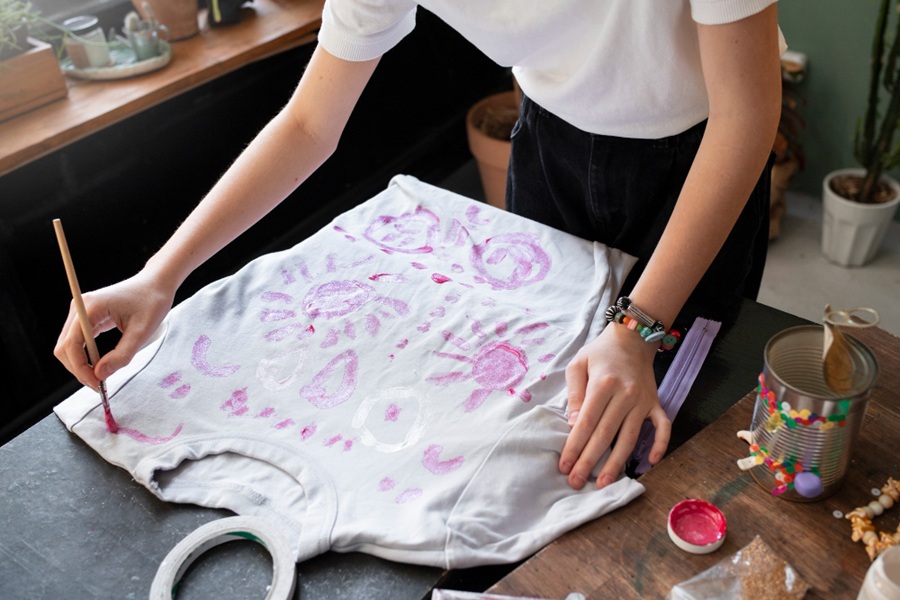Turning your crafting hobby into a money-making venture is easier than you might think, with a few smart systems to back you up. Whether you’re good at stitching quilts, pouring candles, or painting custom signs, your creative spark can light up a thriving small business.
With the right approach, you can transform your passion into a source of income. As your sales pick up, you can scale your business online with the right tools and services. This can mean online marketplaces to sell your creations or social media marketing to easily reach customers. Similarly, check printing companies can help manage payments to suppliers or vendors, letting you focus on what you love, creating.
This isn’t just about making pretty things. It’s about seeing the potential in your skills and setting up a system to make them profitable.
Let’s check out the what and how of turning your creative project into a business venture.
A Real, Profitable Business
DIY is having a moment. People are selling everything from hand-stitched pillows to custom soy candles, transforming hobbies into real businesses.
A 2023 Etsy report shows revenue of $2.75 billion, a 7.1 percent increase from the year before. Thanks to social media and online shops, anyone with a craft can reach buyers across the globe. According to McKinsey, micro-businesses are the backbone of the U.S. economy.
It’s not just about making cool stuff. It’s about spotting an opportunity and building a setup that lets your creativity pay off. Whether you’re selling at a local craft fair or shipping orders worldwide, a little planning can turn your passion into a steady side hustle.
Finding Crafts That Click With Buyers
Some DIY projects sell better than others. Home decor, like hand-painted signs or knitted blankets, is a big hit because people love unique touches for their spaces.
Personalized gifts, think engraved cutting boards or custom pet portraits, are also hot. Globally, personalized gifting is a $28.9 billion industry as of 2024. Eco-friendly crafts, like reusable tote bags or upcycled furniture, draw buyers who care about sustainability.
Before you go all-in, test your ideas. Sell a few pieces to friends or at a local market to see what gets attention. Look for signs of demand, like repeat requests or likes on your Instagram posts. That’s your cue to keep going.
Getting Started
You don’t need a fancy setup to start selling. Pick a platform that fits your vibe, Etsy or Shopify for online sales, Instagram for quick social media posts, or local craft fairs for face-to-face connections.
In 2023, 80 percent of small businesses used social media as their main sales channel, per Forbes.
Keep your tools simple. A basic spreadsheet can track your supplies and sales. Set aside a small budget for materials and shipping so you’re not dipping into your profits. A corner of your home for crafting and packing keeps things organized. These small steps make it easy to grow when you’re ready.
Running Things Like a Pro
Selling crafts means more than just making them. Customers want clear updates, fast shipping, and products that match your photos. Be upfront about timelines, say, three to five days for custom orders, and stick to them.
Small touches, like a thank-you note designed on Canva or streamlined shipping with tools like ShipStation, make buyers feel special.
Don’t skip basic bookkeeping. Track what you earn, spend, and owe for taxes from the start. Plenty of crafters use tools like automated invoicing or check mailing services to stay on top of payments.
Smart Payables notes that bulk sending of invoices or marketing materials helps DIY business owners maintain professional communication without manual effort.
Marketing Your Crafts Smartly
Getting eyes on your work is just as important as making it. Start with great photos, natural light, and a clean background to make your products pop. Share your process on social media, short videos of you painting or stitching can pull in followers. Social media marketing is the fastest and most effective way to reach your buyers worldwide.
Engage your audience with stories about your craft, why you started, or what inspires you. Offer limited-time discounts or bundle deals to spark sales. If you’re ready to spend a little, try targeted ads on Instagram or Pinterest to reach buyers searching for handmade goods. Keep it simple, and let your work shine.
Growing Your Venture Step by Step
Turning your DIY gig into something bigger takes time, but treating it like a real business, even part-time, makes all the difference. Reinvest early sales into better supplies or nicer product photos to stand out online.
Take it one step at a time. Start by nailing your product and selling locally. Next, launch an online shop or try social media ads. Later, you might pitch to boutiques or team up with other makers. Smart systems, like consistent packaging or automated tools, make each step easier. The goal is a business that grows without stealing the fun of creating.
Your DIY projects can be more than a creative outlet, they can be a legit way to earn. Test what sells, set up simple systems, and grow at your own pace. With a bit of strategy, your craft can become a profitable venture that’s all your own.







Leave a Reply